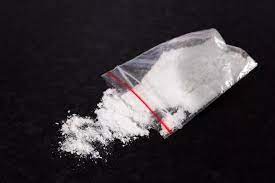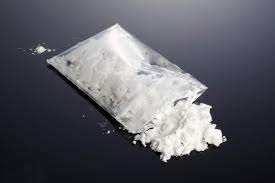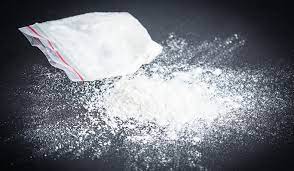Uncategorized
Understanding U-47700: The Deadly Pink Drug
In the ever-evolving landscape of synthetic drugs, U-47700, commonly known as “Pink,” has emerged as a particularly dangerous substance. This potent synthetic opioid has garnered attention due to its high risk of overdose and fatality. In this blog post, we’ll delve into what U-47700 is, its street names, including “pink heroin,” its effects, risks, and the broader implications of its use.
What is U-47700?
U-47700 is a synthetic opioid that was initially developed by the pharmaceutical company Upjohn in the 1970s. It was intended to serve as a potent analgesic, much like morphine or oxycodone, but it was never approved for medical use. The chemical structure of U-47700 is designed to mimic the effects of morphine, providing significant pain relief. However, its potency and potential for abuse have made it a target for illicit production and distribution.

Chemical Composition and Potency
U-47700, chemically known as 3,4-dichloro-N-[2-(dimethylamino)cyclohexyl]-N-methylbenzamide, is an opioid agonist. This means it binds to the opioid receptors in the brain, particularly the mu-opioid receptors, which are responsible for pain relief, euphoria, and, unfortunately, respiratory depression.
One of the most alarming aspects of U-47700 is its potency. It is estimated to be approximately 7.5 times more potent than morphine. This high potency significantly increases the risk of overdose, especially when users are unaware of the exact dosage they are consuming.
Street Names: The Rise of “Pink”
U-47700 is often referred to by various street names, with “Pink” or “Pink Heroin” being the most common. The name “Pink” likely originates from the color of the powder or tablets that are often sold on the streets. However, it’s important to note that the color can vary, and relying on the color alone is not a safe way to identify the drug.
Other Common Names
In addition to “Pink” and “Pink Heroin,” U-47700 may be referred to as “U4,” “Pinky,” or simply “U-4.” These street names can vary by region and among different groups of users, making it challenging for authorities to track and control its distribution.

Effects of U-47700
As a potent opioid, U-47700 produces effects similar to other opioids such as heroin, fentanyl, and morphine. Users may experience:
- Euphoria: A strong sense of well-being and happiness, often described as a “high.”
- Pain Relief: Significant reduction in pain, which was the original intended use of the drug.
- Sedation: A feeling of relaxation and drowsiness.
- Respiratory Depression: Slowed or shallow breathing, which can be life-threatening.
Short-Term Effects
In the short term, users may experience a range of effects, including:
- Intense Euphoria: The high potency of U-47700 can lead to an intense euphoric state, which is often the primary reason for its recreational use.
- Nausea and Vomiting: Common side effects of opioid use.
- Drowsiness: Users often feel extremely tired and may fall asleep quickly.
- Confusion and Dizziness: Cognitive impairment and lack of coordination are also common.
Long-Term Effects
Long-term use of U-47700 can lead to severe health consequences, including:
- Addiction: Like other opioids, U-47700 is highly addictive, leading to physical dependence and withdrawal symptoms.
- Organ Damage: Prolonged use can cause damage to the liver, kidneys, and other organs.
- Mental Health Issues: Chronic use can lead to anxiety, depression, and other mental health disorders.
Risks and Dangers of U-47700
The risks associated with U-47700 are significant, primarily due to its high potency and the potential for overdose. The danger is compounded by the fact that U-47700 is often sold illicitly, meaning users have no way of knowing the exact dosage or purity of the drug they are consuming.
Overdose Risk
One of the most critical risks of U-47700 is overdose. Symptoms of an overdose may include:
- Severe Respiratory Depression: Slowed or stopped breathing, which can quickly lead to death.
- Unconsciousness: Loss of consciousness or inability to wake up.
- Pinpoint Pupils: Extremely small pupils, a common sign of opioid overdose.
- Cyanosis: Blue-tinged lips and fingertips due to lack of oxygen.
Overdose deaths related to U-47700 have been reported worldwide, underscoring the lethal nature of this drug.
Legal Status and Regulation
Given its high potential for abuse and the significant risks it poses, U-47700 has been classified as a Schedule I controlled substance in many countries, including the United States. This classification indicates that U-47700 has no accepted medical use and a high potential for abuse. Despite these regulations, the drug continues to be manufactured and sold illicitly, often via online markets and dark web channels.
The Spread of U-47700: A Global Concern
The spread of U-47700 is not limited to any single region; it is a global concern. The drug has been found in various countries across North America, Europe, and Asia. Its distribution is often linked to the dark web, where it can be purchased and shipped worldwide with relative anonymity.

The Role of the Dark Web
The dark web has played a significant role in the distribution of U-47700. Online marketplaces allow sellers to reach a global audience, making it difficult for law enforcement agencies to track and shut down operations. These marketplaces often advertise U-47700 as a “research chemical” or under various street names, further complicating efforts to regulate its sale.
Public Health Implications
The rise of U-47700 has significant public health implications. The drug’s high potency and risk of overdose contribute to the ongoing opioid crisis, which has already claimed countless lives. Public health officials and policymakers are grappling with how to address the spread of synthetic opioids like U-47700 effectively.
Harm Reduction Strategies
To mitigate the risks associated with U-47700, harm reduction strategies are essential. These may include:
- Education and Awareness: Informing the public about the dangers of U-47700 and other synthetic opioids.
- Access to Naloxone: Naloxone is an opioid antagonist that can reverse the effects of an overdose if administered in time. Increasing access to naloxone can save lives.
- Support Services: Providing support services for individuals struggling with addiction, including counseling, rehabilitation programs, and medical treatment.
The Challenge of Detection
Detecting U-47700 in the body can be challenging due to its chemical structure. Standard drug tests may not always identify the presence of U-47700, necessitating specialized testing methods. This complicates efforts to diagnose and treat overdoses, as well as track the drug’s use and distribution.
Advanced Testing Methods
To accurately detect U-47700, advanced testing methods such as gas chromatography-mass spectrometry (GC-MS) or liquid chromatography-tandem mass spectrometry (LC-MS/MS) are often required. These methods can identify the specific chemical markers of U-47700, allowing for more accurate diagnosis and treatment.
Conclusion: A Deadly Epidemic
U-47700, or “Pink,” represents a deadly chapter in the ongoing opioid crisis. Its high potency, ease of access, and the difficulty of detection make it a particularly insidious drug. As with many synthetic opioids, the challenge lies in balancing regulation, enforcement, and harm reduction to protect public health without criminalizing those struggling with addiction.
Final Thoughts
Efforts to combat the spread of U-47700 must be multifaceted, involving law enforcement, public health officials, policymakers, and the community. Education and awareness are crucial components in this fight, helping to inform individuals about the risks and encouraging safer practices. Access to treatment and support services can provide a lifeline for those affected, offering hope and a path to recovery.
By understanding what U-47700 is, its effects, risks, and the broader context of its use, we can better address this deadly epidemic and work towards a safer, healthier future for all.
In this blog post, we have explored the critical aspects of U-47700, a synthetic opioid that has become known as “Pink” or “Pink Heroin.” From its chemical composition and effects to the significant risks and public health implications, it is clear that U-47700 poses a severe threat. By spreading awareness and implementing comprehensive harm reduction strategies, we can take steps to mitigate the impact of this dangerous drug.
